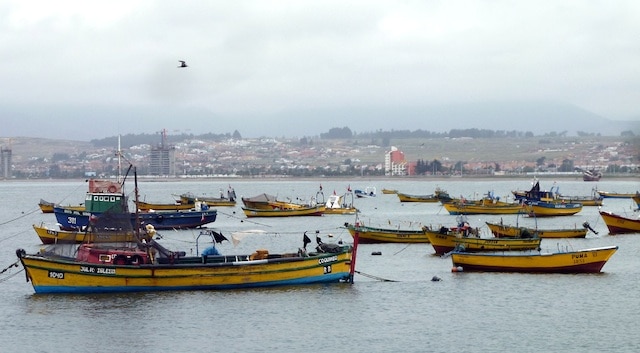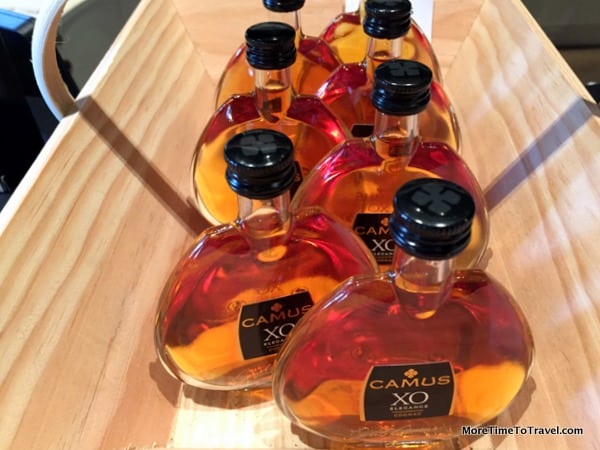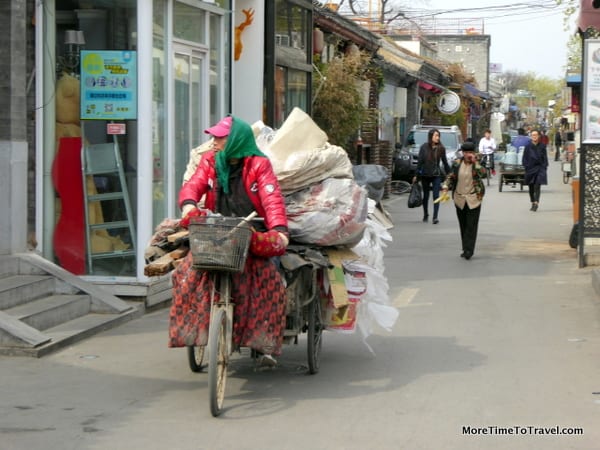Chile 101: 3 ports of call provide an education on Chilean fare

Before embarking on a 17-day cruise to South America, I knew very little about Chilean food. Tasting my way through three Chilean ports changed that.
Chilean food isn’t particularly bold. Rather, it’s characterized by its no-nonsense simplicity that emphasizes ocean-fresh fish and shellfish and features abundant farm-fresh fruits and vegetables. Dishes and menus are built on centuries-old Spanish traditions. The food is enhanced, of course, when paired with a glass of excellent Chilean wine.
Fishing around Coquimbo
Old fishing boats, charming in their scruffiness, troll the large, natural harbor at the gritty port city of Coquimbo, in the Elqui province of northern Chile. On a Sunday afternoon, my husband, Jerome, and I follow our noses to an open-air fish market in walking distance from where our ship is docked.
Whole fishes are suspended like clean laundry above each stall. Succulent heaps of enticing shellfish — including mussels, squid, clams, razor clams, shrimp and scallops — are arranged neatly on tables underneath. Fish-mongers simultaneously clean and fillet the fish and bargain with customers.
Multigenerational families come to enjoy the harvest from the sea, either taking it home or eating at one of several informal restaurants, where freshness and low prices seem guaranteed. We don’t get very far touring the cavernous market before we feel compelled to sample. Two women are selling freshly made empanadas, stuffed with a choice of seafood and then fried. At $2 to $3 each, these are Coquimbo’s answer to tasty and inexpensive fast food.
Other vendors sell plastic cups filled with moist ceviche, usually made here with sea bass, which is “cooked” in a combination of grapefruit and lime juice, then flavored with cilantro and minced chili peppers.
Marketing in La Serena
La Serena, the second-oldest city in Chile, is only a 10-minute taxi ride from the port at Coquimbo. We pass neocolonial- style buildings that have survived devastating earthquakes en route to La Recova, the arched marketplace in the city’s center.
Vendors sell handicrafts and food delicacies such as crystallized papayas, manjar blanco (a sweet spread) with nuts and lucuma (a tropical fruit). We purchased an inexpensive hand- made wooden implement used to mold cooked rice.
At the nearby outdoor farmers market, locals shop for food as they have for generations. Make-shift stands hold mounds of peaches, apples, clementines, strawberries, cherimoyas, avocados, artichokes, asparagus, red potatoes, mushrooms and limes, as well as nutritious quinoa (called the “mother grain” of the Incas), and pickled sugar beets, and a variety of olives and goat cheeses.
Much of the produce sold here is grown in the Elqui Valley. However, the large grapes used to make pisco, the brandy considered to be the national drink of both Chile and Peru, are grown locally, as are the popular papayas, used both as a fruit and made into juice. The offerings look a bit battered, but we learn that the highest quality produce is generally reserved for export.
Dining in Vina del Mar
For an eat-like-locals restaurant experience, the next day we visit La Flor de Chile in Vina del Mar, about 75 miles northwest of Santiago, Chile’s capital. This once-swanky beach resort used to attract wealthy families from Santiago and Valparaiso. The artsy shops, wonderful park (Parque Quinta Vergara) and numerous, inexpensive, hole-in-the-wall eateries (called picadas) now draw a more middle-class clientele.
Although expanded in size, La Flor has occupied the same corner spot on a tree-lined street for more than 80 years. Guests can sample traditional Chilean dishes at outdoor tables or eat in one of the cozy rooms indoors beneath a poster of James Dean. If there’s a soccer game going on, locals are bellying up to the large mahogany bar to cheer for their favorite team.
We order a pisco sour — a citrusy, frothy and very potent cocktail — and a glass of Chilean wine. Then we sample two tradi- tional dishes: a hearty bowl of cazuela, a stew prepared with chunks of meat, potatoes, green beans, onions and corn on the cob, and the house specialty, an artery-clogging but delicious chorrillana, made with sauteed beef strips and onions, served on a bed of french fries. There’s simply no room for dessert, but we wonder, should we try?
[Previously published in the Chicago Tribune – January 15, 2012]





